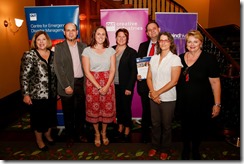Over the past three years, my colleagues and I at Queensland University of Technology have partnered with Queensland Fire and Emergency Services (QFES) and the Eidos Institute to undertake an Australian Research Council Linkage project to analyse and evaluate how social media are used by emergency management authorities, media organisations and citizens during recent natural disasters events.
 During this time we have worked closely with officers from several Australian emergency management organisations to better understand from their practical experience how social media are used in emergency communications, and to find out those areas that are working well as well as …
During this time we have worked closely with officers from several Australian emergency management organisations to better understand from their practical experience how social media are used in emergency communications, and to find out those areas that are working well as well as …












